Complete Story
02/26/2018
Study Reveals Podiatric Treatment Saves Limbs, Lives + Money
CONTACT:
info@nyspma.org
STUDY REVEALS PODIATRIC TREATMENT SAVES LIMBS, LIVES + MONEY
New York State Podiatric Medical Association Takes a Deep Dive Analysis Into the Value of Podiatric Services to Prove that Podiatric Treatment Improves Quality of Life While Reducing Healthcare Costs.
NEW YORK (February 22, 2018) – A research-based study by the New York State Podiatric Medical Association (NYSPMA) – the largest statewide component of the American Podiatric Medical Association (APMA) – showed that incorporating podiatric care may decrease healthcare costs among obese patients by $1.1 billion and up to $510 million for patients with diabetes.
What’s more, podiatry services and treatment may decrease opioid dispensing (28 percent) among persons with a back- and podiatric-related pain diagnosis, may decrease falls (36 percent) among elderly and at-risk populations, and may reduce hospitalizations relating to obesity (19 percent) and
diabetes (37 percent).
Feet, may not only provide important clues about a person’s overall health, but foot pain, gait problems, and other foot- and ankle-related disorders can affect the whole person. These issues not only impact the knees, hips and back, but are also predicators of bigger problems, like hypertension, cardiovascular disease, diabetes, and other costly chronic health conditions.
That’s why in 2017, the NYSPMA commissioned a study by Navigant Consulting in response to New York State’s Medicaid reform to advocate for the value of podiatric services to meet New York’s healthcare goals.
Beginning in 2011, New York State embarked on a multi-year journey to redesign its Medicaid program. New York is currently implementing projects to improve health outcomes and decrease costs including opportunities to move towards value-based payments[1]. A central component of these efforts is the Medicaid Delivery System Reform Incentive Payment (DSRIP) program that will shift at least 80 percent of Medicaid managed care payments to providers from fee for-service to value-based payment by 2020[2]. The State is also implementing the State Health Innovation Plan and New York State Prevention Agenda, which aligns with the DSRIP program’s overall population health goals[3] focusing on obesity, diabetes, fall prevention, and opioid abuse.
“Podiatric intervention is a key component of effectively managing chronic conditions and improving quality of life for New Yorkers,” said Dr. Paul J. Liswood, NYSPMA president-elect and a Brooklyn-based podiatrist who actively advocates about podiatry’s critical role in preventative care.
“As New York podiatrists, it is our mission to educate New Yorkers about how the expansion of podiatry’s role in the New York healthcare landscape can positively impact the whole person while reducing healthcare costs.”
The NYSPMA study focused on four chronic conditions, including diabetes, obesity, substance abuse/back pain, and fall prevention. The findings were published in the white paper titled, “Podiatric Services Deliver Value and Improved Health Outcomes.”
Key findings of the analysis:
Podiatric services deliver value and improved health outcomes for diabetic patients.
- 37 percent reduction in the odds of subsequent inpatient admission among persons diagnosed with foot ulcers that received services performed by a podiatrist.
- The potential to reduce approximately 13,500 inpatient admissions for foot ulcers.
- A savings opportunity of approximately $510 million in healthcare costs in one year.
Podiatrists decrease costs and hospitalizations for obese patients.
- 39 percent of New Yorkers are obese, as reported by the State of Obesity in 2017.
- 19 percent reduction in the odds of a subsequent inpatient admission among obese persons receiving services provided by a podiatrist – avoiding up to 36,000 inpatient admissions.
- Savings opportunity up to $1.1 billion in healthcare costs.
Podiatrists decrease opioid dispensing among people with back pain and a
podiatric-related condition.
- According to the CDC, between the years of 2014 and 2015, the number of drug-related overdose deaths in New York increased by 20 percent.
- 11 percent reduction in the odds of an opioid drug being dispensed among persons with back pain and 28 percent reduction in the odds of an opioid drug being dispensed among persons with back, and podiatric-related pain diagnosis who received services performed
by a podiatrist. - Podiatric services may be associated with a reduction of opioid dispensation for 18,000 people per year.
Podiatrists help prevent falls for the elderly and at-risk populations.
- The New York State Department of Health reports that due to falls: Two older New Yorkers die, 140 are hospitalized, and 223 are seen in emergency departments every day.
- 36% reduction of falls over a 12-month period for individuals with an increased risk of falls receiving podiatric interventions.
- New York currently spends approximately $1.7 billion in hospitalization charges and $145.3 million in outpatient emergency department charges annually due to falls.
“While New Yorkers may typically overlook their feet, preventative podiatry care is proven to play a key role in prevention and management of chronic disease, improving quality of life and increasing mobility,” Liswood adds.
The NYSPMA complete white paper is available upon request. For more information on foot health or to find a podiatrist in New York State, visit www.nyfoothealth.com and follow on Facebook and Twitter.
About NYSPMA:
Established in 1895, the New York State Podiatric Medical Association (NYSPMA) is the first organization of its kind in America. NYSPMA is the largest statewide component of the American Podiatric Medical Association (APMA) and its affiliated national network of certifying boards and professional colleges. The NYSPMA and its more than 1,100 doctors of podiatric medicine adhere to a code of strict ethical standards and participate in numerous programs to benefit patients, the podiatric profession, and the general public. For more information, visit www.nyspma.org.
[1] https://www.health.ny.gov/health_care/medicaid/redesign/dsrip/docs/1st_annual_update_nystate_roadmap.pdf
[2] https://www.health.ny.gov/health_care/medicaid/redesign/dsrip/
[3] https://www.health.ny.gov/prevention/prevention_agenda/2013-2017/




